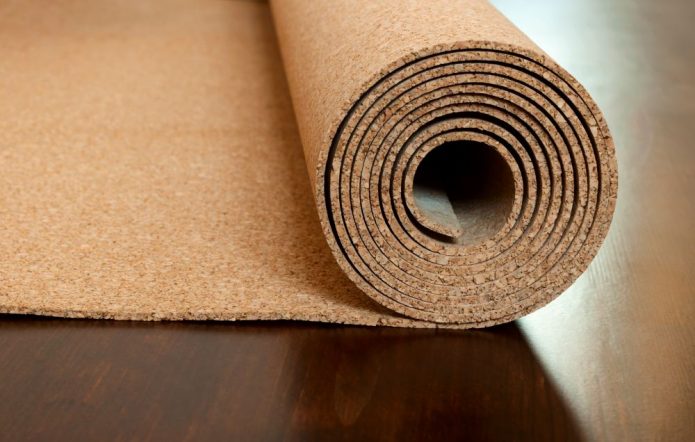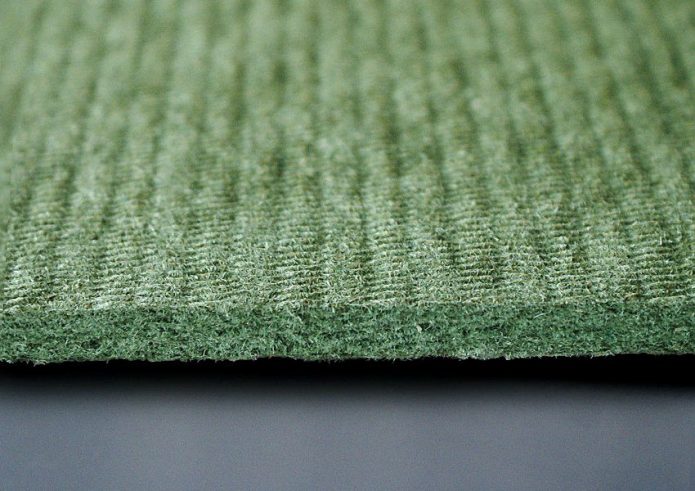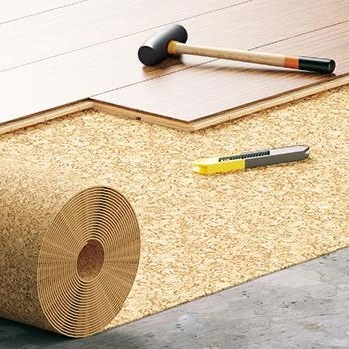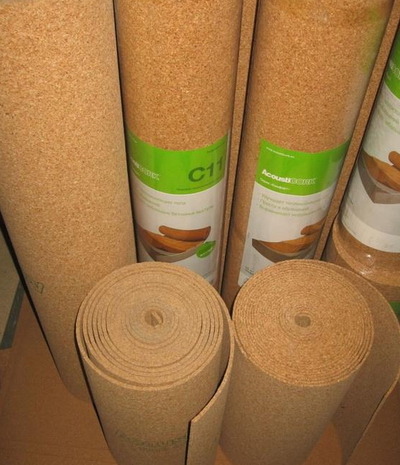Which substrate under the laminate is better: coniferous or cork
For high-quality and durable laying of the laminated floor, it is necessary to choose the best substrate for the technical characteristics. To choose between coniferous and cork under the laminate, it is necessary to compare the advantages and features of the materials on the market.
Which is better: cork or coniferous underlay for laminate
A completely natural substrate is made by pressing crumbs from the bark of cork oak. It is ideal for wooden floors.

Table: cork substrate specifications
| Parameter / Property | Cork backing performance |
| Price | High, from 185 to 500 rubles. per m² |
| Life time | Durable |
| Features | Density 200–260 kg per m³ |
| Environmental friendliness | All natural environmentally friendly material |
| Thermal conductivity | Low, λ = 0.042 W / (m * K) |
| Sound absorption | High, odds. = 16 dB. |
| Ease of installation | Deforms up to 10% under significant loads, crumbles and breaks during inaccurate installation |
| Release form | Rolls |
| Moisture resistance | It is afraid of moisture, requires hydro and steam insulation, impregnation |
| Underfloor heating system compatibility | Not compatible |
| Strength, load resistance | Retains original size, cushioned |
Coniferous is made from pressed needles and coniferous wood, bonded with natural wood resin, and sold in the form of plates.

Table: characteristics of coniferous substrate
| Parameter / Property | Coniferous substrate indicators |
| Price | From 80 to 200 rubles. per m² |
| Life time | Durable, lasts 2 times longer than a laminate. |
| Features | Density 240 kg per m³, designed for use on wooden substrates, adapted for screeding in Russia |
| Environmental friendliness | Natural material, not suitable for allergy sufferers |
| Thermal conductivity | Low, λ = 0.05 W / (m * K) is recommended for use in the northern regions |
| Sound absorption | It perfectly dampens vibration when walking on a laminate floor, coefficient. = 22dB |
| Ease of installation | Convenient plate size, some models have a spike-groove connection |
| Release form | Slabs |
| Moisture resistance | It is afraid of moisture, accumulates it, marginal swelling of 6% |
| Underfloor heating system compatibility | Not compatible |
| Strength, load resistance | Elastic, has a damper effect |
For ease of selection, the pros and cons, as well as features of the application are summarized in the table.
Table: advantages and disadvantages of use
| Cork | Coniferous | |
| pros |
|
|
| Pinus |
|
|
| Scope of application |
|
|
Both materials are widely used in the arrangement of the laminate. Each type of substrate has its own advantages and disadvantages. And for the right choice, it is important to consider the features of the room, the cost and convenient installation.



